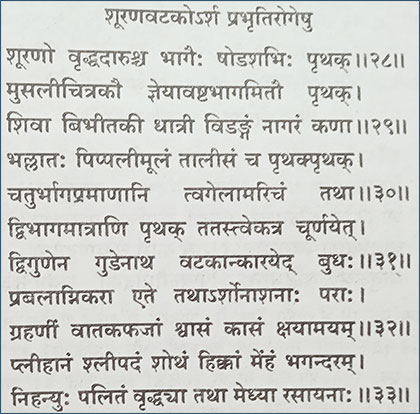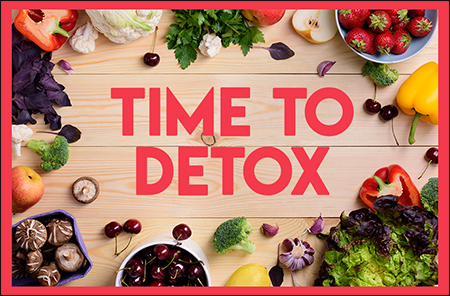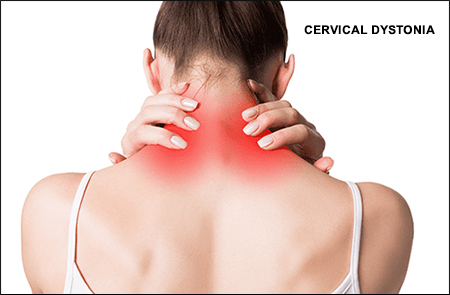Abstract
Cancer is a words that spreads more fear and terror in the entire lexicon of medicine. This condition without any doubt demands more attention. Cancer is called neoplasia and Neoplasm means new growth. If you want a more meaningful definition then it can be said as 'a neoplasm is an abnormal mass of tissue. The growth of this tissue exceeds and is uncoordinated with that of the normal tissue and persists in the same excessive manner after cessation of the stimuli which evoke the change'. This can be understood as the abnormal mass which is purposeless and preys on the host. Cancer is one of the most dangerous diseases of the present century. In this we will discuss all about cancer and how Ayurveda plays its role in management of cancer.

Introduction
As mentioned before, in cancer there is abnormal growth of cells which spreads to other parts of the body. But discussing further about cancer, there is one thing that is to be kept in highlight and it is the difference between cancer and tumor. Tumor refers simply to a swelling that is present which is not having any cardinal signs like inflammation. It is just an overgrowth of tissues without being benign or malignant. On the other hand cancerous cells are capable of producing tumours swelling and cancer is a term for all malignant tumors. The features of cancerous cells are bleeding, swelling, pain and the malignant growths are associated with symptoms like weight loss of unknown cause, anorexia, prolonged cough and changes in bowel habits.
WHO (World) health organisation has also presented the recent data stating that there were 10 million deaths in 2020 and these 10 millions deaths were due to cancer alone. This 10 million accounts for the 1 out of 6 global deaths. Out of these big bunch of cancer cases only 30-50% were preventable.
Moving further lets understand how Ayurveda understands cancer
Ayurveda and Cancer
The Ayurvedic texts explain that cancer is described as an inflammatory and non inflammatory swelling. The entire system of Ayurveda works on Tridosha that is vata, pitta and kapha. The balance of these dosha are really important as otherwise it leads to occurence of many diseases and these three dosha are normal then it leads to the normal functioning of the body.
In malignant tumours, tridosha get aggravated and lose their mutual coordination that causes tissue damage, resulting in critical condition. Tridosha causes excessive metabolic crisis resulting in proliferation of multiple diseases.
Statistics regarding Cancer
The statistics of leading type of cancer are as follows:
- Breast cancer: 11.7% of all cancer deaths
- Lung cancer: 11.4% of all cancer deaths
- Colorectal cancer: 10% of all cancer deaths
- Liver cancer: 8.2% of all cancer deaths
- Prostate cancer: 7.3% of all cancer deaths
- Stomach cancer: 5.6% of all cancer deaths
Factors Enhancing the Occurrence of Cancer in Human Race
The factors include certain processed chemical foods, stress, environmental pollutants, infections, exposure to ionising radiation etc. These factors alter the gen cells in the body and scientifically many gene expression alterations are required before cancer develops.
Although initiation of cancer and progression are predominantly accelerated by acquired genetic alterations. It is very clear that micro environment related epigenetic changes play vital roles in neoplastic development.
Now the next question arises what is Epigenetics and what are epigenetics changes?
Epigenetics is defined as gene expression activity and expression that occurs without alterations in DNA sequences and is sufficiently powerful to regulate the dynamics of gene expression.
In Spite of the current scientific advancements and achievements this deadly disease has not been reduced.
Ayurveda's Role in Cancer
Ayurveda has a very great role in cancer and also manages it 50 times better than modern medication. Though the working of these two systems together gives more impressive results. Ayurvedic medicine and alternative therapy play a good role in finding the supreme causes of an illness and providing therapeutic approaches. There are four categories for this. The four categories are as follows:
- Rasayan chikitsa: This helps in establishing the normal functioning of the body.
- Prakritisthapan chikitsa: Effective in maintain the healthy state of body.
- Roganashini chikitsa: The treatment is effective in curing the disease.
- Naishthiki chikitsa: It is a way of treatment through spiritual approach.
The Ayurvedic approach to cancer treatment is highly effective to improve the quality of life and survival rate. The non- pharmacological therapy (Daivavyapashraya chikitsa) is the form of Adravyabhuta chikitsa which maintains the health and provides the cure of the disease in both ways physically and mentally. Adravyabhuta chikitsa with dravya bhuta chikitsa is a remarkable treatment procedure to get desired and optimum results in different pathological conditions. This also works for maintaining health and wellbeing. Various measures of the adravya bhuta chikitsa are yoga,mantra and pranic healing.
What can be done according to Ayurveda for immunity enhancement?
To improve the immunity of cancer patients, ayurvedic treatment along with healthy ahara- Vihara that is diet and lifestyle modifications gives very good results. The meditation involving chakras is one tool to offer the optimal quality life in cancer patients.
Now, the next question arises: What are Chakras and What is their role?
1. Chakras
Chakras are the "switches" in the path of energy flow in an individual which are representative of pranayama kosha and are subtle in nature. These chakra in the body create a human energy field around each human being. In addition, chakra healing is a highly emerging system of energy based healing techniques. This technique utilises the PRANA to balance, transform and harmonise the body's vital energy.
2. Chakras Meditation and their effect in Cancer
Chakras are described as centres of the subtle body. Each chakra is related to the physical body through activities of various glands and nerve plexuses. The anatomical correlation of each chakra to the nerve plexus and the glands is available in various ancient and modern texts. They are not made of nerves but are powerful and subtle centres of energy. Chakras are also an integral part of yoga. They create a human energy field around each human being which is scientifically proven.
The scientific evidence provides tangible proof of the existence of the body's energy and its relation to health and well being. There is a clear mention of treating prana (which is a bioplasmic body) in ancient science. According to various acharyas study of interactions between living organisms and electromagnetic fields, forces, energies, currents and charges. Bioenergetic medicine refers to the manipulation of bioenergetic fluxes to affect health in a positive way. It is the branch of integrative medicine that studies the science of therapeutic potential of subtle energies.
3. Balancing the Chakra
The balancing of chakras is a procedure that aims to balance and cleanse the life force energy in a person' body. These therapies can help people to relax and may improve quality of life. This can possibly be of great help in caring for cancer patients and reducing complications. The advancements in cancer management techniques leaves a huge imprint on a patient's mind and body. They are not only expensive but also harmful up to a certain level, thus hampering one at physical and mental level.
The Ayurvedic principle of maintenance, of health and curing the disease is the actual need required in the present age. Thus, devoted much of our days to chakra balance through meditation, yoga, aromatherapy, sound therapies, affirmations and praying may not be realistic for everyone but by being aware of these invisible chakras and signs of an imbalance, we can apply these new methods of self help.
Herbs For Cancer
Further in this article we will discuss certain herbs that are believed to have the best properties to enhance and maintain the body's immunity and also work on concising the effects of cancerous cells. These marvellous herbs are
1. Ashwagandha (Withania somnifera)
Ashwagandha is a very popular, potent and effective herb in Ayurveda. The herb belongs to balya and bruhiniya gana and to the solanaceae family. The body has three doshas that are vata, pitta and kapha. Kapha aggravation is the main reason for the occurrence of arbuda in human's body and vata, which is the kinetic energy of the body, is responsible for metastasis. Ashwagandha helps in balancing both of these doshas, reduces chances for cancerous cell development and also reduces the effect of cancerous cells in the body by limiting their proliferation stage and differentiation stage.
2. Giloy (Tinospora cordifolia)
Giloy which is also called as guduchi is having great effects in improving the immunity of the body. This herb is known to have tridosha (vata, pitta, kapha) pacifying properties and also possess analgesic properties as well. The extract of giloy is very useful in arresting the cancerous cells in the proliferating stage and prevents differentiation.
3. Tulsi (Ocimum sanctum)
Tulsi is a holy plant but besides being holy it is having a very useful effect in stopping the enhancement of cancer cells. Tulsi is rich in basil camphor and has eugenol that has cancer cells fighting properties. This chemical makes sure that the size of malignant neoplasm must not increase.
4. Haridra (Curcuma longa)
Haridra is one of the most famous herbs in Ayurveda and is easily found in each and every household kitchen. But its use is much more extensive than that. It is very famous for its kapha vata anulomana effect. The herb is having ushna veerya thus behaves as an analgesic and also possesses anti inflammatory properties. It works on the body by enhancing its strength and defence mechanisms.
4. Manjishtha (Rubia cordifolia)
Manjishtha is pittashamak but also has its impact in anulomana of kapha dosha. That is why it is really useful in cancer as well. Manjistha helps in enhancing the immune system and raises a very tough defence mechanism of the body. It has its impact on kapha due to its drying property and hot potency.
5. Amla (Emblica officinalis)
This herb also belongs to the vyavasthapan gana and to the euphorbiaceae family. The herb mainly works as an digestive stimulant and keeps the digestive fire ignited so that further accumulation of ama dosha or endotoxins do not take place and the body detoxifies easily. This herb also has immunomodulatory properties, protects the body from free radical damage and reduces the effect of chemotherapy as well.
6. Bhumi amla (Phyllanthus niruri)
Bhumi amla is a very well known herb that has great effect in strengthening the liver thus resulting in an enhanced defence system of the body. It is also a digestive fire balancer and is also helpful in all types of liver ailments including liver cancer. The herb also has antioxidant effects and prevents damage caused by free radicals.
Conclusion
Cancer is like a deep seated parasite in today's society whose cure is almost impossible to find according to modern science. But with Ayurvedic immunomodulatory herbs and deep concepts of cancer the cancer can be treated very well. Though its treatment is difficult but even impossible, it deeply means, "I'm possible". So, here Ayurveda gives hope to the people who are suffering from cancer and thinks that their life will end very soon.









